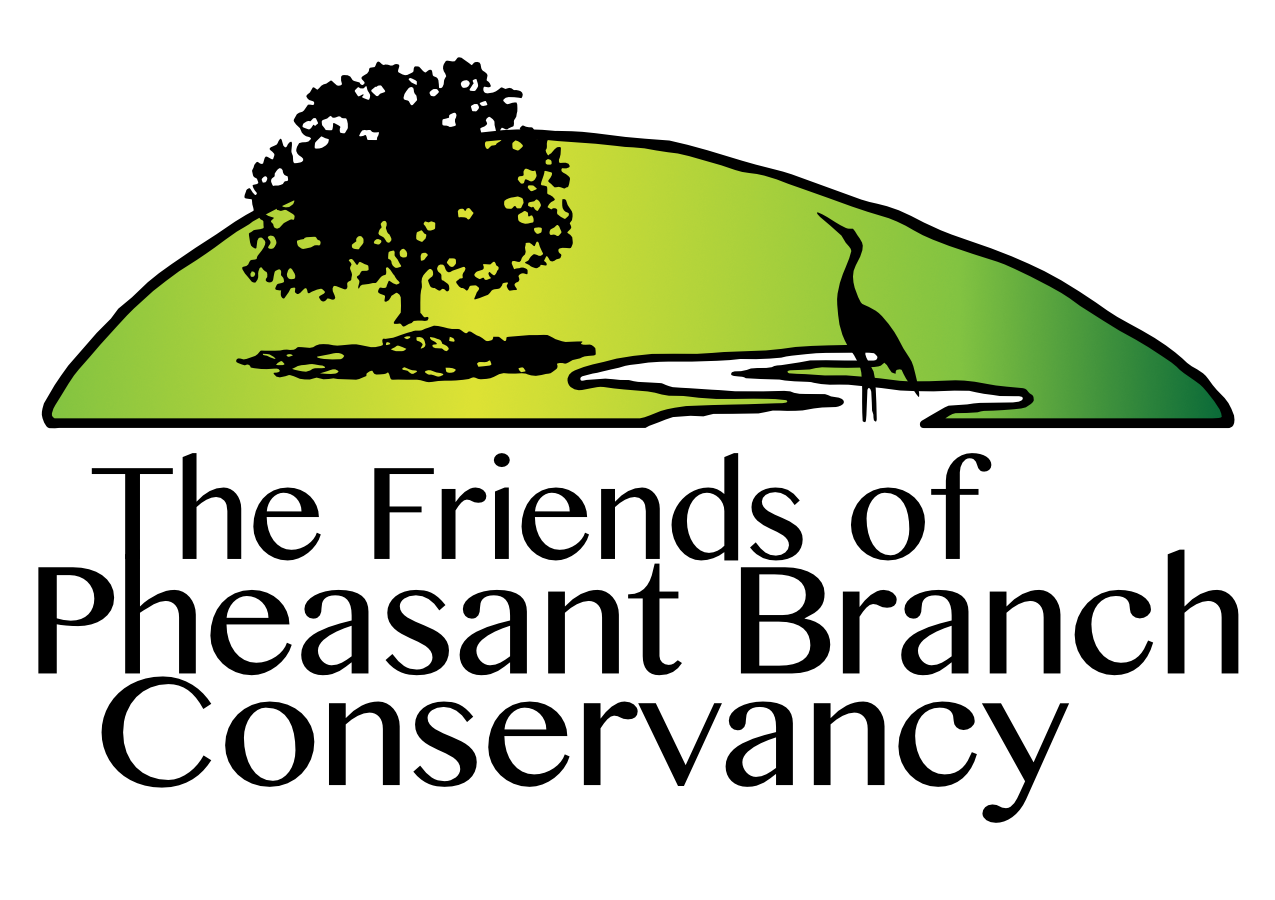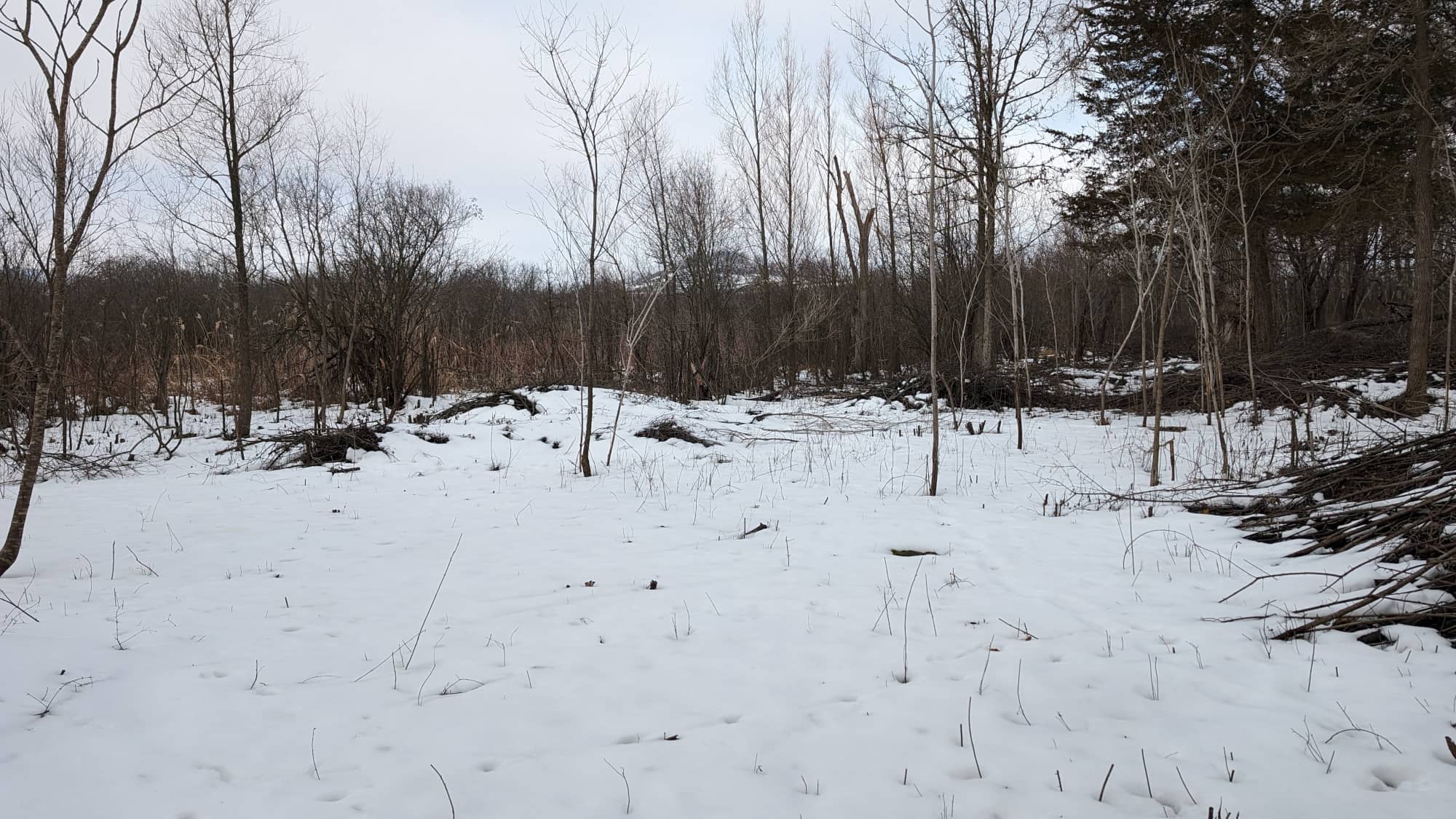Photo caption: Buckthorn removal on southeast corridor trail
Article by: Hans Hilbert, Co-President, Friends of Pheasant Branch Conservancy
Continuing Conservation
The Friends of Pheasant Branch Conservancy have a long history with invasive species. Over a quarter century ago, volunteers began efforts to restore and manage the Pheasant Branch Conservancy, focusing then on the hillsides and top of Pheasant Branch Hill. Today, our work continues as we tackle invasive species along the southeast corridor trail.
Battling Buckthorn and Other Invaders
Invasive species such as buckthorn pose a significant threat to the health and biodiversity of our natural areas. Buckthorn forms dense thickets that crowd out native plants, reducing beneficial habitat for wildlife. The dense canopy shades the forest floor, preventing regeneration of the oaks, hickories, cherries, and other native trees. Combating this problem requires diligent removal.
In the early days of restoration atop Pheasant Branch Hill (Frederick’s Hill during the Frederick Farm era), volunteers battled endless understories of honeysuckle mixed in with the occasional buckthorn. There were workdays where so much woody vegetation was being removed that we may have had six separate piles burning at one time, yet only a small area would be cleared. We would return to push further only to find that the stumps of previous cuts had already resprouted. No matter how much we cut, it was growing back at a rate that we could not compete with. The cost-benefit analysis was clear, and the lesson learned; we needed the help of herbicides if we were going to make any progress. With the help of herbicides, we could hold back the invasive regrowth long enough for the native seed bank to have a chance, and once it was established, it could provide some needed competition to keep out the undesirable species.
Crossing Municipal Boundaries
Our early work took place within the Dane County portion of the Conservancy, outside of the city limits. Now, along the southeast corridor trail, we are within the city boundary and therefore must operate under a new set of rules. Strengthening the collaborative relationship between the Friends of Pheasant Branch and the City of Middleton is a key strategic goal, to help us be better partners in stewardship of the Conservancy and to facilitate our restoration work within city limits. As we grow our relationship with the City of Middleton, we have needed to overcome logistical and policy challenges that present themselves as we continue our work.
One obstacle has been the use of herbicides. Herbicides are obviously controversial, but without responsible use we are fighting an endless battle. The City of Middleton has not had a policy allowing volunteers to apply pesticides on city property, but we are working with city staff to modify the policy and develop a volunteer guide so authorized volunteers can access all our best restoration tools.
Another obstacle has been the physical removal of biomass created from cutting so much buckthorn. After our first few workdays along the southeast corridor trail, the city would hire laborers to operate the chipper for piles along the trail. As we worked deeper toward the marsh, hauling the branches out to the trail for chipping became impractical. As a result, we created smaller piles to burn last winter. Securing approval to burn within city limits was delayed, as this is a relatively new function for volunteers in Middleton conservancy lands. We understand that the growing number and size of burn piles is visible to visitors, but it is also an indication of our closer collaboration with Middleton land managers allowing us to do this work, and of the inevitable growing pains of negotiating a deeper level of partnership!
We continue to work with the city to find solutions to these obstacles. In the last few years, there has been a significant turnover in city staff, and it has taken time for new staff to get up to speed. On our end, we are working with the city to adopt a volunteer handbook like that used by Dane County Parks to establish a clearinghouse for policies that apply to groups and individuals interested in helping the city protect and restore our public lands. We feel we have made progress on this front but given the workload and annual work cycles of the Parks and Recreation Department, these approvals take time.
Even without the use of herbicide as part of our current efforts, our work is still beneficial as we focus our efforts on reducing the seed source of buckthorn. Each mature female buckthorn tree can produce thousands of berries every season. Though low in nutrients, these seeds are eaten by birds. Since the berries contain a natural laxative, the birds do not get far before depositing the seed. We are hopeful that our work in reducing the seed source will help slow the buckthorn regeneration enough to allow our relationship working within the city to progress.
Join the Effort
If you are interested in getting involved in the Friends of Pheasant Branch Conservancy’s efforts to restore and manage the Conservancy, please check out all the volunteer opportunities posted on our website, pheasantbranch.org/events. Your help is greatly appreciated!

